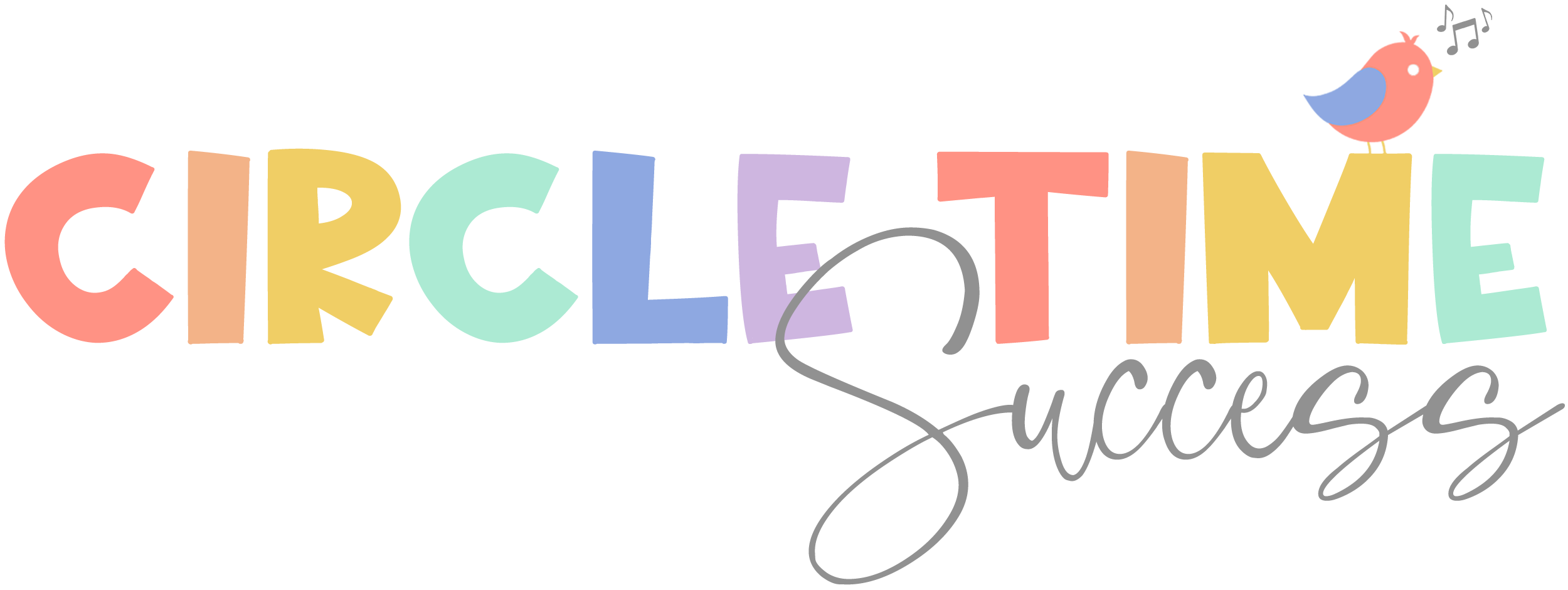
Infusing movement activities into circle times isn’t just a nice thought, it’s a must!
Why? Because kids can not stay seated for an extended amount of time. Let me say that again, kids can not stay seated for an extended amount of time because they need to move!
By infusing a little bit of movement strategically placed throughout the circle time, it can not only increase engagement, but decrease behavior issues. A double whammy!
If the idea of having 20+ kids moving inside all at the same time sounds like the worst idea in the world, don’t worry, there are a lot of ways you can bring in movement that won’t make your kids (or you) go crazy! You’ll be able to control the environment to ensure safe and meaningful experiences without making the children feel controlled.
Let’s checkout type of movement songs that can make this happen.
1. Songs that only requires stationary movements
Stationary movements get kids on their feet, but don’t require children to leave their spot on the floor and move around the room. They include such movements as jumping, rocking, hopping, moving from high to low and spinning (careful with spinning as kids can get silly, so hold off until children are used to moving and you are comfortable with facilitating movement activities).
It is a great “first step” if you are just starting out introducing movement activities at circle time. Stationary movements will still get the blood flowing to the brain, which will still satisfy that primal need to move.
Activity Idea: Touchin’ Toes by Musically Minded
Learning Objective: Rhyming, singing, following directions, personal space, balancing, vocabulary, tempo and more!
How to teach it: Before turning on the song, have children point to their eyes, their ears, their mouth and their nose. Turn on the recording and follow along!
2. ABA Songs
Our brains love patterns! Many songs are written in ABA form meaning chorus, verse, chorus, verse (you get the idea). Finding movement songs where the A is a stationary movement and the B has children moving around the room means the song creates the structure for you. Verses are usually fairly short so they aren’t moving too much before stopping again for the A.
The short movements found in the B section are often choreographed. This allows children to begin to get experience moving around the room with other children while keeping their personal space. Because the B section doesn’t last long, they don’t get ramped up to the point where they have difficulty calming their bodies down.
Activity Idea: I Like to Ride My Horse by Kathy Ride-Newman (note: you will need a spotify account to play this song, but it’s free!)
Learning Objective: Patterns, singing, following directions, personal space, galloping, listening!
How to teach it: Tell the children that they will bounce on their horse in place during the beginning of the A Section, and then take their horse for a ride during the B section as they gallop around the room. Continue this stop/move pattern throughout the song. Be sure to join along with them so they’ll have you as a model. It’s a great way for you to energize your body and mind as well!
3. Stop and Start Songs
Moving and freezing, moving and freezing, moving and freezing. You get the idea. Much like ABA songs, stop and start songs also have a structure. But the fun part is, kids never know when they will stop or start so they have to be listening all the time! #focus!
These types of songs are best to introduce after your kids have had a lot of experience moving around the room and are able to maintain their personal space. The songs you choose can either have them moving any way they want (safely of course) during the movement or the song may say how to move such as tip-toeing or galloping.
You could even create your own stop and start movement activities with songs your kids love from the radio or Kidzbop! All you’ll need to do is stay by your music player and hit pause every so often and they’ll freeze.
Activity Idea: Jump Along Josie
Learning Objective: Alliterations, singing, following directions, personal space, body control, freezing, listening, movement vocabulary, tempo and more!
How to teach it: Turn on the music and encourage children to move around the room by moving their bodies the way the song suggests. When the songs says “stop”, they freeze their bodies till it starts again with a new movement. This song ends by slowing down and telling the children to sit – it makes the transition to a seated position so much easier!
I hope these above ideas help any teachers out there looking to add more movement in their circle times. Recognizing that children’s bodies and brains need to move and do so often will help to create a group environment where children want to return to again and again.
Want to add more meaningful movement activities to your circle time? Check out Musically Minded’s movement album, “Move, Move, Move”. Filled with 23 songs kids love, you’ll always have a song to keep kids engaged and having fun at circle time. Available in both digital download and CD.

